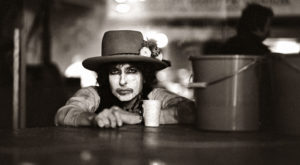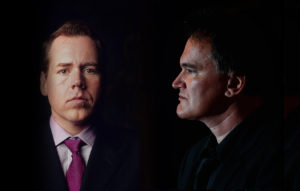It was a most fortuitous shipwreck. The S.S. Politician floundered on rocks near the island of Eriskay in the Outer Hebrides in February 1941, cutting short its journey from Liverpool to the USA. The hull was breached and the ship could not be saved. The captain ordered the crew to evacuate, and the cargo — some quarter of a million bottles of whisky — was abandoned.
The news spread quickly. Whisky had been in short supply during the war, and the grounding of the S.S. Politician must have seemed like the gods of the sea were rescuing the locals from the drought. Word reached the novelist Compton Mackenzie, who was living on Barra at the time, an island to the south-west of Eriskay. The area was soon flooded with the booze, and Mackenzie’s home was no exception.
When Tom Johnston, Secretary of State for Scotland, visited the author’s home that winter, he was astonished to see his bookshelves lined with bottles. It had been Johnston who had decided to charter the S.S. Politician and send as much whisky as possible to the USA, given that the Germans had destroyed two distilleries already. Although Johnston was a teetotaller, Mackenzie nonetheless offered him a dram. “After all,” he said, “you are the man we have to thank for giving us whisky galore.”
It was not until after the war that he got around to committing the story to the page, but Whisky Galore (1947) was to be the novel for which Mackenzie — who died on this day 50 years ago — is most fondly remembered. It was an international bestseller. Paris’s first discothèque, Whisky à Gogo, was named after the French title of the novel. It was made into a film in 1949, the first of the Ealing comedies, starring Basil Radford, Joan Greenwood, Catherine Lacey and Gordon Jackson. American film distributors had a moral objection to the use of the word “whisky”, and so there it was renamed Tight Little Island. Mackenzie later observed that what would have been the perfect title — Scotch on the Rocks — had yet to be invented.
It seems peculiar that this eccentric tale set in the Outer Hebrides should be the principal legacy of one of Britain’s most prolific and acclaimed writers. Literary fashions are as fickle as they are misleading. When Leo Robertson wrote his study of Mackenzie’s works in 1954, he was able to assert with confidence that Mackenzie was “one of the most popular figures in the English literary world”, but few today would recognise his name.
This is an astonishing feat of cultural amnesia, given that Mackenzie wrote more than 100 books during his lifetime, was among the recipients of the first crop of knighthoods bestowed by Queen Elizabeth II, created Gramophone magazine (which still runs today), and co-founded the National Party of Scotland — which transformed into the SNP upon its merger with the Scottish Party in 1934.
Mackenzie’s Scottish identity and commitment to nationalism was a matter of instinct drawn from ancestry. He was born Edward Montague Compton Mackenzie in West Hartlepool in 1883 and raised in London, but his lineage was traceable back to the old Scottish families on both his mother’s and father’s side. He may not have had a Scottish accent, and lived for most of his life elsewhere, but his affinity for Scotland was one of his most profound and enduring passions.
Mackenzie was a child prodigy; he was reading adult novels before he was two, and had begun studying Latin at four and Greek at nine. Perhaps this genius explains why the level of detail in his books can be off-putting for some. Doubtless there are longueurs, and it is fair to say that he was overly prolific. That he has been neglected by critics in recent years may be down to their inability to comfortably categorise his work. The antics of Buttercups and Daisies (1931) and The Monarch of the Glen (1941) seem far removed from the touching poeticism of Guy and Pauline (1915), but it is even more surprising to consider that the same author wrote a spirited defence of Edward VIII’s right to a morganatic marriage (The Windsor Tapestry, 1938), a history of the socio-political aspects of fifth-century Athens (Pericles, 1937), a paean to the British gas industry on the verge of its nationalisation (The Vital Flame, 1946) and a book of imaginary conversations between cats (Catmint, 1961).
The breadth of Mackenzie’s obsessions must be related to what he once described as his “Kodak mind”. In his 10-volume autobiography My Life and Times, his memories of early childhood are as lucid as anything from later life. For instance, there is his riveting account of the fear that gripped London during the autumn months of 1888, when he was only five. He recalls the hoarse shouting of news vendors on the streets — “Another horrible murder in Whitechapel!” — and the nightly terrors that he experienced as a result. The route of his regular omnibus terminated at Whitechapel, and the infant Mackenzie was often seized with a panic that his stop would be missed and he would be carried into the clutches of Jack the Ripper.
A close encounter at the age of 10 proved a more satisfying memory. He was walking home in Kensington when a carriage drawn by two horses pulled up beside him. A coachman wearing scarlet livery stepped down from the box, took out a knife, and started removing a stone from one of the horse’s shoes: “I was watching this operation with interest when I became aware that the old lady sitting in the landau was bowing to me. She was wearing a mushroom-shaped hat fringed with a short veil. Recognising Queen Victoria, I took off my cap and bowed to her. We must have gone on bowing to one another for half a minute before the coachman extracted the stone and jumped back on the box, when the carriage and pair drove off along the Kensington Road.”
Some of his most compelling reminiscences are to be found in his memoirs of the First World War: Gallipoli Memories (1929), First Athenian Memories (1931), Greek Memories (1932) and Aegean Memories (1940). These are not only personal accounts, but offer a comprehensive history of the key events of the war in the East Mediterranean. Mackenzie had been commissioned in the Royal Marines, and eventually served with British Intelligence in Greece.
I am fortunate enough to own a first edition of Greek Memories, even though most copies were withdrawn and destroyed after the author was prosecuted under the Official Secrets Act. Mackenzie’s book shared details of military operations and for the first time made the public aware of the existence of the Secret Intelligence Service, now known as MI6. He had specifically identified Captain Sir Mansfield Cumming as “C”, a moniker that is still used by the Chief of MI6 today. Government lawyers and MI6 eventually permitted the uncensored version of the text to be republished in 1994.
Perhaps it was Mackenzie’s unexpected shift into comedic writing that prevented his work from retaining the kind of canonical status that had been anticipated in his early career. Henry James had identified Mackenzie as one of the four most important young writers of his day in an article in 1914 for the Times Literary Supplement. His pre-war novels — most notably Carnival (1912) and both volumes of Sinister Street (1913 and 1914) — were critically acclaimed and are still generally considered his most significant literary works, although they are more than matched in terms of scope and ambition by his six-volume novel The Four Winds of Love (1937-1945).
Mackenzie discovered his own distinctive style remarkably quickly. Whereas his first novel The Passionate Elopement (1911) feels a little overwrought, his second novel Carnival reads like a seasoned writer in total control. Mackenzie had self-consciously followed the example of Flaubert in his decision to represent his lead character — the Cockney ballet dancer Jenny Pearl — as the focus of every scene, and show her journey from the cradle to the grave. There is a lightness of touch in his portrayal that in no way depreciates its psychological complexity. Much of Jenny’s life is performance and posture, but the reader is granted insight into her soul.
Even at this early stage, Mackenzie was eschewing the sentimental. He does not shy away from the degradation that Jenny’s profession demands of her. Consider the depiction of “the Piccadilly courtesans” at the “Orient Palace of Varieties”, where Jenny first makes a living. “Under the stars they achieve a pictorial romance; but on the carpet of the Promenade, they are hard and heartless and vile. Their eyes are coins; their hands are purses.” In such subterranean fleshpots, all pretentions to civility are abandoned to the joint impulses of sex and predation. “The corks pop; the soda splashes; money chinks; lechery murmurs; drunkards laugh; and down on the stage Jenny Pearl dances.”
The critics were unanimous in their admiration, albeit with some reservations about the morality of the work. The Illustrated London News acknowledged that many readers would find it “an unpleasant book”, but praised it as “very sympathetic to one of the most touching and pitiful things in the world — the opening heart of a woman in unworthy surroundings”. The Spectator accused Mackenzie’s novel of displaying a “curious hostility toward the male sex” and a “frank disregard of the conventional canons of taste”, but admitted its “occasional brilliancy of presentation”.
Sinister Street is perhaps the most compelling of all. There are three key bildungsromane of this period that redefined the genre and offered realistic and unflinching portraits of adolescence. The first was Forrest Reid’s Following Darkness (1912), soon followed by the first volume of Mackenzie’s Sinister Street (1913) and James Joyce’s A Portrait of the Artist as a Young Man (1916). According to Henry James, by writing Sinister Street Mackenzie had “emancipated the English novel”.
Sinister Street tells the story of the young Michael Fane, from his earliest memories in the crib to his graduation from Oxford University. Its frank depiction of the sexual impulse in youth, and even the homosexual activities that were commonplace in public schools, prompted many booksellers and libraries to ban it from their shelves. The added publicity inevitably made it a sensation. It was one of George Orwell’s favourite novels while a boy at prep school; he described in a letter to Julian Symons how he “got into severe trouble (and I think a caning – I forget) for having a copy”.
Although not in any sense an autobiography, Sinister Street does draw on many of the author’s experiences. While still at school, Michael finds himself in a social clique of homosexual aesthetes, led by the poet Arthur Wilmot. His manner of speech so perfectly captures that combination of the arch and the faux-grandiose that seems a perpetual characteristic of what has become known as the “gay sensibility”. “I should like to die as La Gioconda was painted,” says Arthur, “listening to flute-players in a curtained alcove; or you, Michael, shall read to me some diabolic and funereal song of Baudelaire, so that I may fearfully pass away.”
Mackenzie observed such characters at close quarters. He was only 16 when he befriended members of Oscar Wilde’s inner circle, including Lord Alfred Douglas, Robbie Ross and Reggie Turner. This was in early 1899, just four years after Wilde’s trial and a year before his death. On one particularly memorable night, Douglas invited Mackenzie to a dinner-party and took him afterwards to the Pavilion music hall in Piccadilly (now part of the Trocadero shopping centre). Douglas gave him a signed copy of his poetry collection The City of the Soul. “Someone pinched the volume from my library many years later,” Mackenzie notes in his autobiography. “I suppose it will turn up in a book-catalogue at some absurd price when I am dead.” A quick Google search confirms that he is correct; it was auctioned off for £1,000 in 2019.
Perhaps it was Mackenzie’s deep commitment to his Catholic faith that prevented him from dwelling on his unorthodox attitude to sexual convention. In all ten volumes of his autobiography, there is not one mention of his own bisexuality. When he lived on the island of Capri with his wife Faith between 1913 and 1920, the more tolerant attitude of the locals meant there was little need to keep such matters secret. After all, Capri had been the destination for many gay men fleeing England after Wilde’s imprisonment.
The marriage between Faith and Compton Mackenzie lasted for 55 years until her death in 1960. They had no children — other than a stillborn son in 1909 — but their mutual love and respect never wavered. Remarkable for the time, theirs was an entirely open relationship, in keeping with Faith’s belief in the principle of “love and let live”. Both had sexual relationships with men and women. Mackenzie’s affair on Capri with Luigi Ruggerio (brother of Capri’s most famous gardener, Mimì Ruggiero) coincided with Faith’s affair with the Italian pianist Renata Borgatti. In his book Capri: Island of Pleasure, the historian James Money notes that Mackenzie had invested in a second property, a cottage in the Valley of Cetrella, “for private meetings with his boy-friends”.
The thriving community of lesbian expatriates on Capri during the First World War was the subject of one of Mackenzie’s best works, Extraordinary Women (1928), the first novel about lesbians to be sold in British bookshops. Although often wrongly dismissed as homophobic, the subject of his satire is the pretensions of the privileged; the sexual orientation of his characters is treated throughout as entirely natural. The novel appeared a matter of months after Radclyffe Hall’s The Well of Loneliness, which became the subject of a famous obscenity trial for its portrayal of same-sex love. Perhaps the comedic tone of Extraordinary Women, and its male authorship, prevented it from stirring the antennae of the censors.
Extraordinary Women was the second of Mackenzie’s romans à clef about the people he knew on Capri. The first is the brilliant Vestal Fire (1927) , a work that reaches great satirical heights simply by accurately reflecting the realities of the colourful range of Anglo-American expatriates that occupied the island in the first part of the 20th century. The story revolves around the gay French aristocrat Baron Jacques d’Adelswärd-Fersen, who had fled Paris for Capri after a sex scandal, and the civil war that erupts in the expatriate community as a result of his presence.
The depiction of Kate and Saidee Wolcott-Perry, an American lesbian couple who had combined their surnames and lived as sisters, is particularly striking. Mackenzie changed the names of all the characters, and postponed writing the novel until the key figures had died in order to avoid libel, yet it provides a fascinating account of this bizarre little community who had found a corner of the world in which they could live without fear of judgement. Faith Compton Mackenzie had captured the sense of it when she later recalled that “everyone was either a little bit or extremely mad”.
It seems that Mackenzie was drawn inexorably to islands. Leo Robertson described him as an “island-addict” who was nonetheless “the least insular of persons”. After his time on Capri, he bought the lease for Herm and Jethou in the Channel Islands, living on one then the other until he eventually relocated to the island of Barra in the Outer Hebrides. Yet for a man who had lived such a rich life, and who had seen the utter transformation of his world, Mackenzie was never guilty of nostalgia. His was a belief in the eternity of the present. It was why he never revisited any of the islands where he had enjoyed his happiest moments. He only returned to Barra after his death, to be buried in the old churchyard of Eolaigearraidh.
He was able to retain his childlike energy and enthusiasm throughout his 89 years. “I am temperamentally incapable of dwelling upon unhappiness,” he wrote in My Life and Times, “I sympathise with the sundial’s preference for sunny hours.” There is a wonderful interview with Mackenzie for the BBC’s Face to Face, recorded in January 1962. At nearly 80 years of age, he has somehow retained the impish quality of his youth. That the interview takes place with Mackenzie lying in bed should not imply a lack of vigour; this was a theatrical device invented by the programme makers.
He did not necessarily fear death but, like a child, the idea struck him as faintly preposterous. He reflected on his own mortality in the ninth volume of his autobiography. “As I write these words on the edge of my 88th year I am becoming so much more and more aware of the sacredness of life that the obliteration of it by death becomes continuously more incredible.” Only his faith could make sense of it. “The Christian creed,” he wrote, “offers the only rational guide to an otherwise incomprehensible universe.”
A mere 50 years after Compton Mackenzie’s death, there is really no excuse for the way in which we have allowed him to be forgotten. And although most of his books are not easily found, they still merit our time and attention. That the most accomplished of artists are destined for oblivion is beyond our powers to prevent, but we might at least do our utmost to hinder the process.
Disclaimer
Some of the posts we share are controversial and we do not necessarily agree with them in the whole extend. Sometimes we agree with the content or part of it but we do not agree with the narration or language. Nevertheless we find them somehow interesting, valuable and/or informative or we share them, because we strongly believe in freedom of speech, free press and journalism. We strongly encourage you to have a critical approach to all the content, do your own research and analysis to build your own opinion.
We would be glad to have your feedback.
Source: UnHerd Read the original article here: https://unherd.com/






